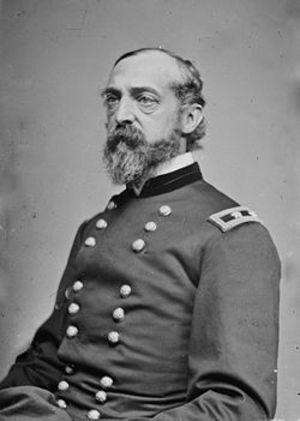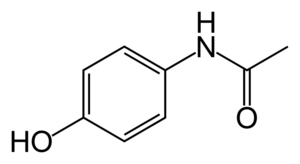The Civil War’s Battle of Gettysburg, fought from July 1 – 3, 1863, near the little eastern Pennsylvania town from which it draws its name, is the largest and single most famous clash between two armies ever fought on North American soil. Over 50,000 members of the Union and Confederate armies fell that day; nearly 6,000 of that number died.
In 1993, producer/director Ronald Maxwell brought a historically accurate re-creation of the Battle of Gettysburg to the screen in a film entitled, appropriately, Gettysburg. One viewing made this magnificent movie one of my all-time favorite war films! It faithfully re-creates this titanic clash with superb acting, an excellent screenplay, a hauntingly beautiful musical score, and some of the most authentic, stirring, and tastefully done battle scenes I’ve ever seen in a movie.
Based upon Michael Shaara’s Pulitzer Prize winning novel The Killer Angels, this film chronicles the actions of many of the battle’s principal characters, and three of the battle’s most important engagements: Union General John Buford’s fight to prevent the Confederates from gaining the high ground north of Gettysburg on July 1; the heroic defense of Little Round Top by Colonel Joshua Chamberlain’s 20th Maine on the following day; and, of course, Pickett’s Charge on the final day of the battle.
Day 1: Buford’s Battle: Union cavalry Brigadier General John Buford scouts the area around Gettysburg for “good ground” to fight on. He knows the Confederates are in the area in force, and he senses a huge battle looming. He also knows that if recent history repeats itself, the Confederates will take the high ground, and the Union forces will suffer another frustrating defeat. Buford chooses his ground carefully; he dismounts his 2,500-man cavalry brigade, and places them in a position to block a Confederate advance to high ground. His brigade delays the Confederates long enough for infantry reinforcements, under the command of Major General John Reynolds, to arrive…
Day 2: Little Round Top: Colonel Joshua L. Chamberlain’s 20th Maine regiment is positioned on a wooded, rocky knoll on the southernmost end of the Union line. Their mission: guard against the possibility of the Confederates attempting an “end run” that would place them squarely in the rear of the entire Union army. As it turns out, that is exactly what the Confederates are planning. Chamberlain, with only 125 men left out of 500 assigned, resists repeated heavy assaults by the Alabama Brigade of Laws’ Division. Once his men finally run out of ammunition, Chamberlain orders a counter-charge that routs the Confederates once and for all…
Day 3: Pickett’s Charge: Having seen his men suffer defeats along each end of the Union line, General Robert E. Lee orders a massive assault on the Union center… He selects General George Pickett’s division to lead the charge. Lee’s second-in-command, General James Longstreet, doesn’t believe the charge will work, and he bluntly tells Lee so. Lee is unmoved by Longstreet’s entreaties; the charge will take place. On the final day of battle, over 5,000 men cross an open field for a distance of over a mile to attack the Union center… where large numbers of troops and artillery have been massed…
The acting in “Gettysburg” is superb! Jeff Daniels, who portrays Chamberlain, gives probably the best performance of any film in which I have seen him appear. He imbues the Bowdoin College professor-turned-soldier with every ounce of the intellectual ability, compassion, and coolness under fire for which Chamberlain is noted by historians. Martin Sheen brilliantly portrays Robert E. Lee as a man whose calm demeanor betrays his zeal for victory, an ardor which leads him to commit the one egregious blunder of his otherwise spotless military career: ordering the Confederate army’s assault on the Union center on July 3, 1863. General James Longstreet is played to perfection by Tom Berenger. Berenger depicts Longstreet as a competent and professional commander whose reluctance to carry out Lee’s order for Pickett’s Charge, because he knows it will fail, may have ultimately led to the Confederate defeat at Gettysburg. Sam Eliot (Buford,) Stephen Lang (Pickett), and Kevin Conway (Sergeant Buster Kilrain) also give performances which are outstanding for their gritty realism and historical accuracy.
Perhaps the best overall performance in the movie, however, is turned in by the late Richard Jordan, who portrayed Confederate General Lewis Armistead. As I watched Jordan’s delivery of two monologues on the eve of Pickett’s Charge, I was struck by the power and eloquence of each. I sensed a deeper underlying emotion in those speeches, almost as if Jordan had somehow foreseen his own premature death from cancer only weeks after Gettysburg was completed.
Gettysburg was filmed at the Gettysburg National Military Park; the scenes of the fighting at Little Round Top and the Devil’s Den were actually shot at those locations on the Gettysburg Battlefield. Over 5,000 Civil War reenactors served as “extras” for the battle scenes. Those scenes are very tastefully done; they show very little blood and gore, while fully conveying the awful violence of battle.
Despite its great length (4 hours,14 minutes), Gettysburg held me spellbound from start to finish, mainly due to its dramatic intensity and realistic battle scenes. This outstanding film is one to be savored, not only by Civil War enthusiasts, but by anyone who loves a sumptuously produced and well acted war movie.




